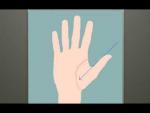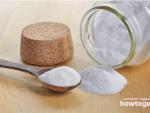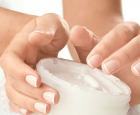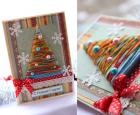How to determine your appearance color type?
It often happens that when you put on an outfit of a certain color, your face begins to come to life, your eyes glow, and your hair shines. But the opposite situation also happens, when the appearance becomes sickly and pale. The whole point lies in the color type of appearance, which determines the range of shades suitable for a particular person. But not every woman knows how to determine her color type, although this is a very important point when choosing clothes.
What is a color type?
The color type of appearance is usually understood as the natural characteristics of a person, which are laid down in the form of the color of the skin, eyes, hair, eyebrows, as well as how the tan lays down. Depending on these parameters, the selection of image colors is carried out, which will harmonize not only with each other, but also with the appearance. This includes not only clothes, but also makeup, as well as the planned hair color. These are quite important reasons to know how to determine your color type, but they are far from the last.

Let's take a closer look at why it is so important to know how to determine your appearance color type. Firstly, choosing clothes will become much easier and more productive. Often girls choose only the shades of things they like, and leave the store without a single thing, since nothing fits. And knowing your palette of shades, you can easily decide on clothes. Even if the color of a certain item is not to your taste, it may be that it is the right one.
Secondly, knowing how to determine your color type, you can avoid many mistakes in makeup, and after just a couple of strokes of cosmetic brushes you will get the very result that will refresh your face and emphasize its features.
Thirdly, in order to avoid mistakes in hair coloring, it is better to know in advance which new color will suit you and which will ruin the whole look.
Here's what the wrong colors can do:
- the face looks sallow and pale or yellow;
- minor redness becomes more noticeable;
- bright bruises appear under the eyes, and small veins and veins also appear;
- wrinkles and nasolabial folds appear deeper, creating the effect of an “aged face”;
- hair loses its shine, becomes dull and inconspicuous;
- In general, one gets the feeling of a girl who has not slept and is not rested.
And this is not the whole list of those “adventures” that can happen if you don’t know how to determine your color type.
In general, color types refer to two main characteristics: cold and warm. Accordingly, such shades emphasize a certain appearance better than others. But such a classification is extremely simple and incomplete in order to understand how to determine your color type and what to do with this knowledge.
Therefore, at one time, specialists in this field developed their own classification, which has a certain parallel between the seasons. It’s not difficult to guess that we are talking about winter, spring, summer, autumn. Conventionally, winter and summer girls belong to cold undertones, and spring and autumn girls belong to warm undertones.
Color types
There is a direct pattern between the names and the color types themselves. It is the shades of the four seasons that are associated with them that formed the basis for their definition. But even they still have their own classification, because the seasons also change.
Spring color type
As mentioned above, this color type is warm. Like spring, people with this type of appearance look blooming and have many warm colors within them.
The main distinctive features are:
- light milky skin, on which a slight blush appears. Most often it is located on the cheeks and chin. Freckles may also be present on the skin;
- the skin is quite thin and translucent, which is why it is difficult to tan and begins to turn red;
- The palette of hair shades starts with light wheat and ends with nut. In between there are shades such as golden, honey, amber. Of course, they all have a warm undertone;
- the eyes are also light - pale blue, green, gray, light brown.
This color type also has several subspecies:
- soft - this is a classic spring with delicate, discreet, smoothly transitioning colors;
- golden - here the hair has a clear golden warm undertone. This subspecies is considered transitional from “spring” to “autumn”;
- bright - the contrast between hair and skin is characteristic here. Hair color may be slightly darker than usual, and skin remains pale. This subtype is considered transitional from spring to winter.
Girls with a “spring” color type need to choose outfits in fresh, light shades and, of course, those that are close to nature. It is important to avoid cool shades.
The most correct colors that can emphasize the fragile appearance of spring are beige, white, orange, gold, caramel, warm pink, carrot, soft red. To add contrast, juicy herbal shades, soft blue, turquoise, and lilac are suitable.
Summer color type
This color type has cool colors. Here the main part is occupied by muted, soft shades, transitioning from spring to autumn.
Girls belonging to the “summer” color type have the following characteristics:
- pale skin with pink, gray, olive or beige undertones. Gray or ashy freckles may also be present;
- despite the fact that the skin is quite transparent and capillaries or redness may be clearly visible on it, tanning is extremely good;
- the hair is devoid of bright colors, so light ash, light brown, cold brown, light chestnut shades predominate. Moreover, with prolonged exposure to the sun, they begin to fade, resulting in even more muted and grayish shades;
- light eyes give away a summer girl. They can be blue, green, walnut, gray, light brown.
There are also three subtypes of summer appearance:
- natural - weak and cold contrast, which lies in the almond, earthy and light brown color of the hair;
- warm - in this subspecies the skin has a subtle warm undertone, but the hair in any case will be light brown or ashy;
- soft - there is practically no contrast between the skin color and the cold shade of the hair.
This color type should be given preference to colors such as soft white, deep gray, cool blue with a gray undertone, purple, lavender, red, crimson, coral, lemon, cool yellow, mint, green.
Warm colors are prohibited. In addition, deep black, orange, red, and gold are not recommended.
And from the video below, all summer girls will be able to glean a lot of useful information about which colors to give preference to and which to avoid.
Autumn color type
Drawing associations with this time of year, the colors form a warm, bright palette. There is a lot of copper, brown, fiery, wine here. Such girls have a rather bright and interesting appearance, and besides, there are quite a few of them.
Among the main features characteristic of this color type are the following:
- skin is olive, bronze, with a golden undertone or ivory. The presence of freckles on the face or body is the calling card of such girls;
- despite the even tone of the face, the skin is quite sensitive to the sun’s rays, so it does not recognize a tan;
- characteristic hair ranges from sunny golden color to fiery red, dark amber;
- have blue, bright blue, green, brown eye colors.
“Autumn” also has three subspecies:
- natural - a bright red shade of hair against a background of yellow skin with a red or pink undertone;
- soft - the hair is more muted, it can be golden, light red, and the skin still has a reddish or pinkish undertone;
- dark - rich dark hair plays into the contrast of a light appearance.
Warm autumn girls need to choose appropriate colors in their makeup and outfits. Therefore, juicy, rich tones would be ideal - sunny, orange, coffee, emerald, beige, orange, mustard, peach, cherry.
In order not to give the appearance of pain, you should avoid cornflower blue, scarlet, lilac tones in both cold and warm shades.
Winter color type
In addition to subtypes, this color type has two subtypes: contrasting and non-contrasting.
The first is characterized by:
- rather pale skin, has a cold bluish undertone;
- hair has dark and deep colors, it can even turn blue;
- eyes - pale blue or brown.
And the second non-contrast subtype is different:
- dark olive skin;
- dark chocolate or brown hair;
- brown or green eyes.
Also, do not forget about the subspecies of “winter”:
- natural - girls have almost white skin with a pronounced cold undertone, brown or chestnut hair;
- dark - dark appearance with black, almost blue hair;
- bright - dark hair contrasting with the face, white skin.
For those with a “winter” color type, rich shades of black and white are perfect. They will favorably emphasize the contrast of appearance. Also, all bright shades will suit such girls - red, wine, yellow, lemon, green, emerald, cobalt blue, chocolate, violet, lilac.








 Nail care
Nail care Prom hairstyle for long hair
Prom hairstyle for long hair 18 wonderful New Year cards that even a child can make
18 wonderful New Year cards that even a child can make The best set of exercises for morning exercises
The best set of exercises for morning exercises